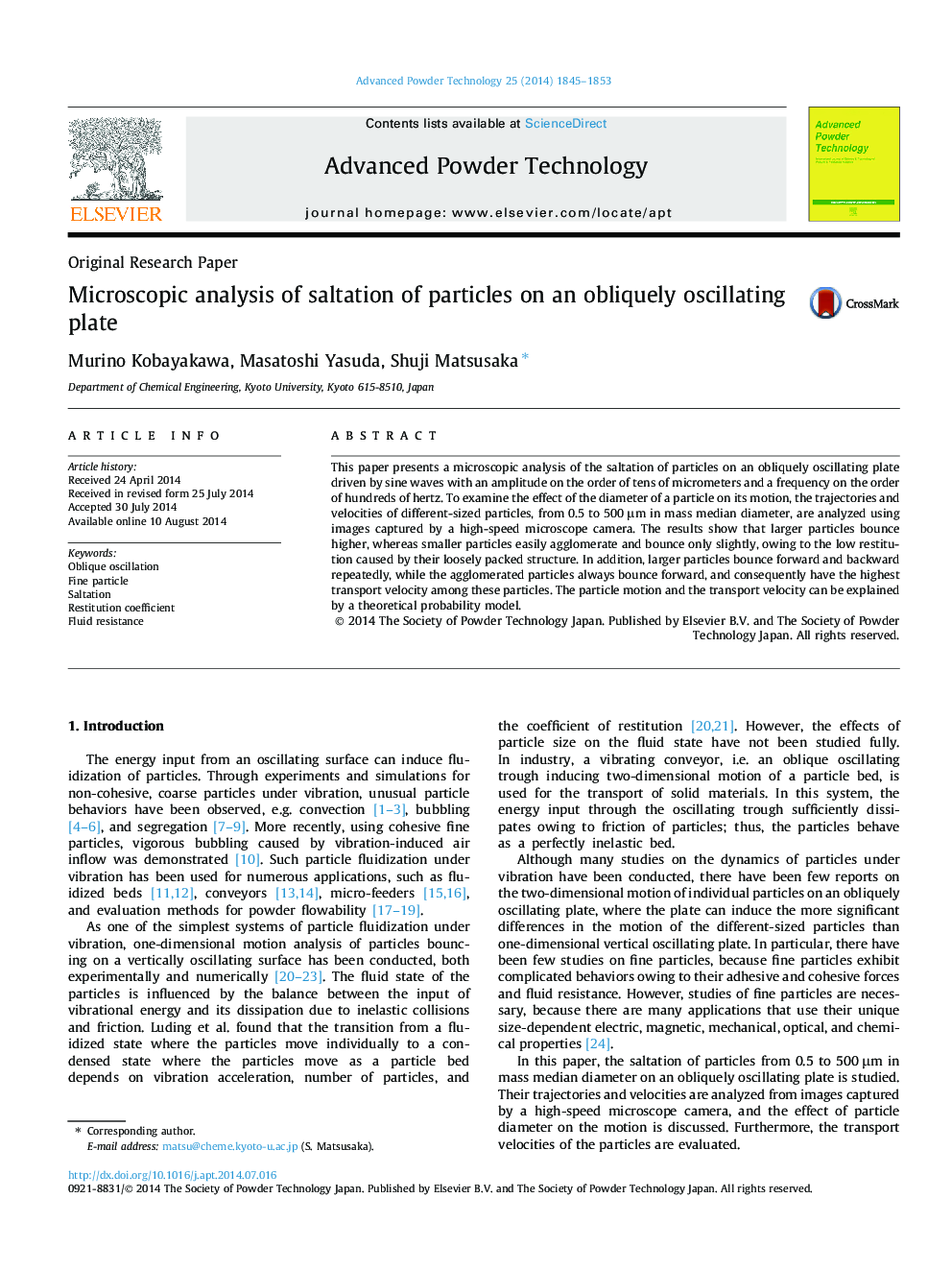| Article ID | Journal | Published Year | Pages | File Type |
|---|---|---|---|---|
| 144188 | Advanced Powder Technology | 2014 | 9 Pages |
•We experimentally study the particle saltation on an obliquely oscillating plate.•We analyze the motion of different-sized particles by microscopic observation.•The particles are transported by the repeated forward and backward bounces.•The ratio of the backward to the total bounces depends on the particle diameter.•The particle motion can be explained by a theoretical probability model.
This paper presents a microscopic analysis of the saltation of particles on an obliquely oscillating plate driven by sine waves with an amplitude on the order of tens of micrometers and a frequency on the order of hundreds of hertz. To examine the effect of the diameter of a particle on its motion, the trajectories and velocities of different-sized particles, from 0.5 to 500 μm in mass median diameter, are analyzed using images captured by a high-speed microscope camera. The results show that larger particles bounce higher, whereas smaller particles easily agglomerate and bounce only slightly, owing to the low restitution caused by their loosely packed structure. In addition, larger particles bounce forward and backward repeatedly, while the agglomerated particles always bounce forward, and consequently have the highest transport velocity among these particles. The particle motion and the transport velocity can be explained by a theoretical probability model.
Graphical abstractFigure optionsDownload full-size imageDownload as PowerPoint slide
